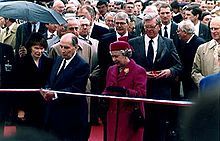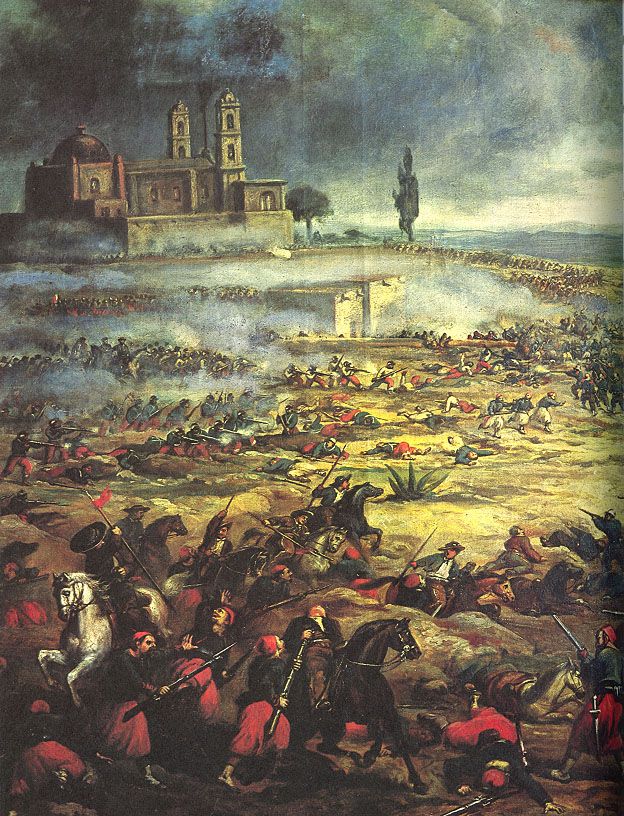Jamie Dimon, the head of it, is one of the smartest bankers we got.”- Barack Obama
And now he’s maybe going to lose his job.
Investors May Lobby JPMorgan to Clip Dimon’s Wings If Vote Fails
Reuters
Sunday, 5 May 2013, 5:15 PM ET
JPMorgan Chase’s Jamie Dimon may be losing ground in his fight to keep the title of chairman, as some major investors push for more oversight of the chief executive after the “London Whale” trading losses.
At the largest U.S. bank’s annual meeting in two weeks, shareholders will be able to vote on a non-binding proposal to separate the chairman and CEO roles. Two of the bank’s top 10 shareholders told Reuters they are considering voting in favor of the proposal, a reversal of their position last year, because of the disastrous bets on credit derivatives that cost the bank more than $6 billion last year.
Though he’s flat out promised to quit if he loses the Chairmanship. And he’s not the only Director in trouble.
JPMorgan Directors Feel Heat in a Vote
By SUSANNE CRAIG and JESSICA SILVER-GREENBERG, The New York Times
May 3, 2013, 8:08 pm
Some JPMorgan shareholders are taking public aim at individual directors who hold crucial positions on the bank’s audit and risk committees as the bank grapples with an onslaught of regulatory challenges.
On Friday, the CtW Investment Group, which represents union pension funds and owns six million shares in JPMorgan, said it planned to vote against the three directors on the risk policy committee and the head of the audit committee.
…
Shareholders like CtW are singling out members of the risk committee because they think the board failed to police the bank in important areas, contributing to the trading loss in 2012.“What we have learned over the past year is that the performance of the risk committee is even worse than we thought,” said Richard Clayton, CtW’s research director. “Their behavior is a combination of being out at sea and asleep at the wheel. Both are bad and together they are disastrous.”
James S. Crown, who has been a director of JPMorgan or one of its predecessor companies since 1991, is chairman of the risk policy committee. The other members are David M. Cote, the head of Honeywell International; Timothy P. Flynn, a former KPMG executive; and Ellen V. Futter, president of the American Museum of Natural History. Mr. Flynn was appointed to the risk policy committee in August 2012.
CtW also plans to vote against Laban P. Jackson, chairman of the audit committee, which shares responsibility for oversight.
They should all lose their jobs.
JPMorgan Caught in Swirl of Regulatory Woes
By JESSICA SILVER-GREENBERG and BEN PROTESS, The New York Times
May 2, 2013, 10:00 pm
The possible action comes amid showdowns with other agencies. One of the bank’s chief regulators, the Office of the Comptroller of the Currency, is weighing new enforcement actions against JPMorgan over the way the bank collected credit card debt and its possible failure to alert authorities to suspicions about Bernard L. Madoff, according to people who were not authorized to discuss the cases publicly.
In a meeting last month at the bank’s Park Avenue headquarters, the comptroller’s office delivered an unusually stark message to Jamie Dimon, the chief executive and chairman: the nation’s biggest bank was quickly losing credibility in Washington. The bank’s top lawyers, including Stephen M. Cutler, the general counsel, have also cautioned executives about the bank’s regulatory problems, employees say.
…
In the energy market investigation, the enforcement staff of the Federal Energy Regulatory Commission, or FERC, intends to recommend that the agency pursue an action against JPMorgan over its trading in California and Michigan electric markets.The 70-page document also took aim at a top bank executive, Blythe Masters. A seminal Wall Street figure, Ms. Masters is known for helping expand the boundaries of finance, including the development of credit default swaps, a derivative that played a role in the financial crisis.
The regulatory document cites her supposed “knowledge and approval of schemes” carried out by a group of energy traders in Houston. The agency’s investigators claimed that Ms. Masters had “falsely” denied under oath her awareness of the problems and said that JPMorgan had made “scores of false and misleading statements and material omissions” to authorities, the document shows.
…
In the credit card investigation, people briefed on the case said the comptroller’s office had discovered that JPMorgan was relying on faulty documents when pursuing lawsuits against delinquent customers. The accusations, which are expected to prompt an enforcement action later this year, echo complaints that JPMorgan and rivals plowed through home foreclosures with little regard for accuracy.In a separate investigation into JPMorgan’s relationship with Mr. Madoff, the comptroller’s office raised concerns that the company may have violated a federal law that requires banks to report suspicious transactions.
Out of Control – New Report Exposes JPMorgan Chase as Mostly a Criminal Enterprise
David Dayen, Naked Capitalism
Thursday, March 14, 2013
It’s hard to summarize all of the documented instances in this report of JPM has been breaking the law, but here’s my best shot. I try to keep up on these matters, and yet some of these I’m learning about for the first time:
- Bank Secrecy Act violations;
- Money laundering for drug cartels;
- Violations of sanction orders against Cuba, Iran, Sudan, and former Liberian strongman Charles Taylor;
- Violations related to the Vatican Bank scandal (get on this, Pope Francis!);
- Violations of the Commodities Exchange Act;
- Failure to segregate customer funds (including one CFTC case where the bank failed to segregate $725 million of its own money from a $9.6 billion account) in the US and UK;
- Knowingly executing fictitious trades where the customer, with full knowledge of the bank, was on both sides of the deal;
- Various SEC enforcement actions for misrepresentations of CDOs and mortgage-backed securities;
- The AG settlement on foreclosure fraud;
- The OCC settlement on foreclosure fraud;
- Violations of the Servicemembers Civil Relief Act;
- Illegal flood insurance commissions;
- Fraudulent sale of unregistered securities;
- Auto-finance ripoffs;
- Illegal increases of overdraft penalties;
- Violations of federal ERISA laws as well as those of the state of New York;
- Municipal bond market manipulations and acts of bid-rigging, including violations of the Sherman Anti-Trust Act;
- Filing of unverified affidavits for credit card debt collections (“as a result of internal control failures that sound eerily similar to the industry’s mortgage servicing failures and foreclosure abuses”);
- Energy market manipulation that triggered FERC lawsuits;
- “Artificial market making” at Japanese affiliates;
- Shifting trading losses on a currency trade to a customer account;
- Fraudulent sales of derivatives to the city of Milan, Italy;
- Obstruction of justice (including refusing the release of documents in the Bernie Madoff case as well as the case of Peregrine Financial).
And, exhale.
The sheer litany of illegal activities just overwhelms you. And these are only the ones where the company has entered into settlements or been sanctioned; it doesn’t even include ongoing investigations into things like Libor, illegally concealing inclusions of mortgage-backed securities in employer funds (another ERISA violation), the Fail Whale trades, and especially putback suits for mortgages, where a recent ruling by Judge Jed Rakoff has seriously increased exposure. While the risks are still very much alive and will continue to weigh on the firm, ultimately shareholders will pay, certainly not executives as long as the no-prosecutions standard holds.
Mirabile Dictu! JP Morgan Finally on Regulatory Hot Seat for Widespread Control Failures and Alleged Lying by Blythe Masters Under Oath
Yves Smith, Naked Capitalism
Friday, May 3, 2013
The Times reports that the bank faces actions across eight regulators including: FERC, for a series of “schemes” to dupe state authorities to overpay for power and includes allegations that JP Morgan executive Blythe Masters lied under oath; using false documents when collecting credit card debt; and a failure to report suspicious trading activities by Bernie Madoff.
The fact that JP Morgan is in hot water isn’t news. Josh Rosner revealed in an extensive report released in early March that the bank had paid out over $8.5 billion in fines since 2009, nearly 12% of its net income, for violations across virtually all of its operations. This account showed the carefully cultivated picture of JP Morgan as a well-managed operation was an artful fabrication.
…
The London Whale fiasco alone demonstrated beyond doubt that JP Morgan was, as Rosner put it, out of control. Even before the Senate investigation, media reports provided compelling evidence of astonishing risk management failures, such as having risk management reporting to the CIO, rather than being independent. Sarbanes Oxley expert Michael Crimmins saw the risk management and control failures to be so severe as to firing Dimon.
…
And despite this impressive history of bad conduct, JP Morgan was getting special treatment from regulators as recently as January of this year. Marcy Wheeler noted the OCC failed to clean up “previously identified systemic weaknesses” in its anti-money laundering compliance. Eighteen months of intransigence and all the OCC did was scold a bit. It issued no fine.Even though regulators are finally waking up to the fact that JP Morgan is a dangerous institution that thinks it can act as a law unto itself, the bank does not appear ready to change its ways.
JPMorgan’s annual meeting will be May 21 in Tampa, Florida.







